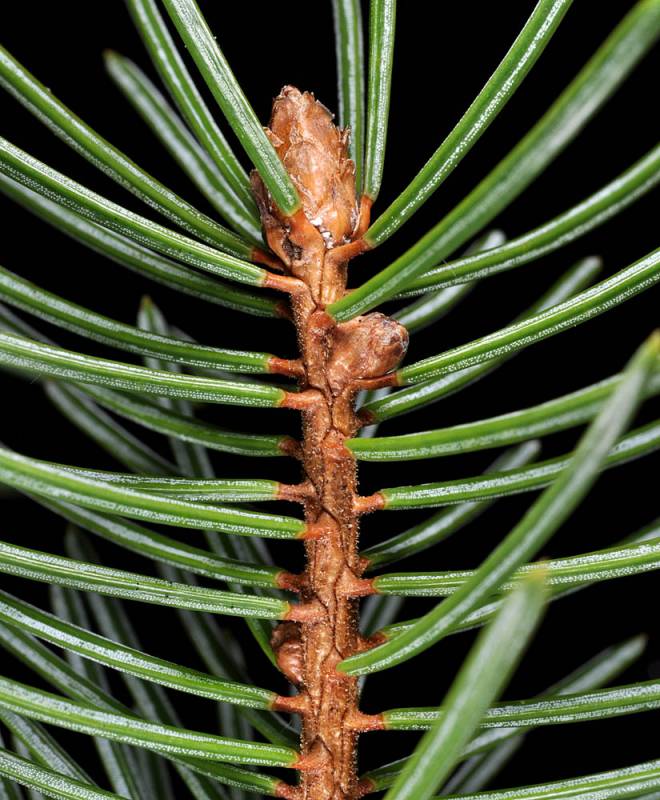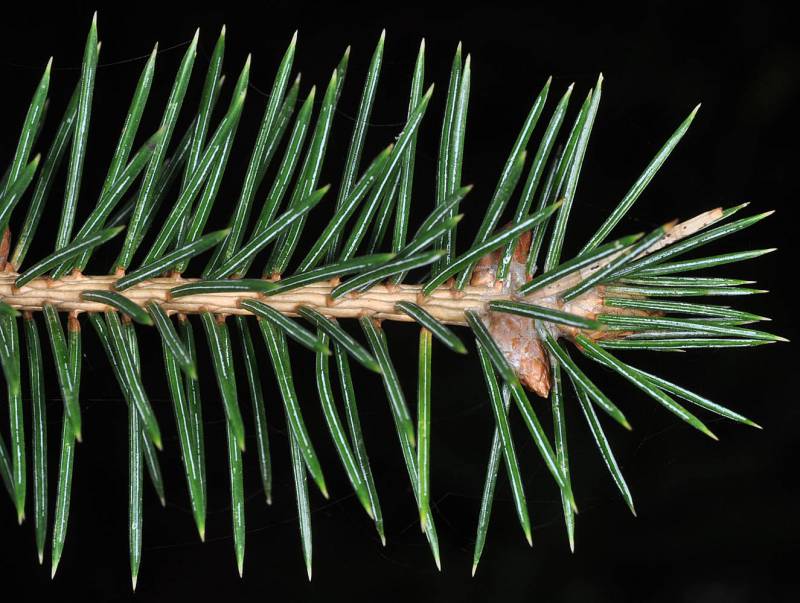Picea engelmannii
Picea sitchensis
Engelmann's spruce
Sitka spruce
Bark rather thin, scaly, brownish-red to purplish; young twigs usually finely pubescent, often glabrous.
Bark very thin, gray-brown to grayish-purple, deciduous in small scales;
twigs glabrous.
Needles fairly sharp but not stiff, 2-3 cm. long, deep bluish-green, spreading in all directions from the branch, 4-angled, with two whitish lines on both surfaces, attached to a raised base.
Needles light green to bluish-green, stiff and sharp, spreading in all directions from the branch, 1.5-2.5 cm. long, flattened, with 2 broad white bands on the upper surface and 2 narrow bands on the lower surface, attached to a raised base.
Staminate cones pendant, red, 10-15 mm. long; ovulate cones 6-9 cm. long, reddish-brown to yellowish-brown, the scales rounded, finely denticulate, rather stiff, the bracts lanceolate, much shorter than the scales and concealed; ovulate cones deciduous as a whole after one season.
Picea engelmannii
Picea sitchensis
- Local floras:
BC,
CA,
OR,
WA
- Local Web sites:
CalFlora,
CalPhotos,
Flora NW,
PNW Herbaria
WildflowerSearch
iNaturalist (observations)
USDA Plants Database
- LBJ Wildflower Center
- SEINet
- Plants of the World Online
- Encyclopedia of Life
- Wikipedia
- Google Image Search
- Local floras:
BC,
CA,
OR,
WA
- Local Web sites:
CalFlora,
CalPhotos,
Flora NW,
PNW Herbaria
WildflowerSearch
iNaturalist (observations)
USDA Plants Database
- LBJ Wildflower Center
- SEINet
- Plants of the World Online
- Encyclopedia of Life
- Wikipedia
- Google Image Search

